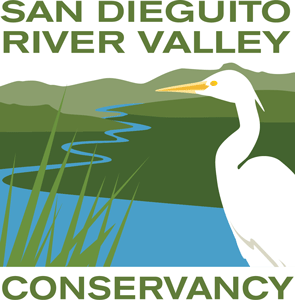Vocabulary
altitude: the height of an object or point in relation to sea level or ground level.
aquifer: an underground layer of rock or soil that contains water from which groundwater can be extracted.
chaparral: a habitat with dense, small evergreen shrubs that grow where summers are hot and dry and winters are cool and moist
coastal sage scrub: a habitat on drier coastal slopes that consists of drought resistant, deciduous shrubs and other plants.
conifers: mostly evergreen trees and shrubs having usually needle-shaped or scale-like leaves and including forms (as pines) with true cones and others (as yews) with an arillate fruit.
culvert: a drainage or channel, such as a flood control channel, that crosses under a road or railway.
cumulonimbus cloud: a cloud forming a towering mass with a flat base at fairly low altitude and often a flat top, as in thunderstorms.
deciduous: plants that lose their leaves during certain seasons; in California, usually the dry summer-fall season.
endemic: native to and confined to a certain place or region. erosion: the process by which water, wind, or other means wears away land. fault line: a line on a rock surface or the ground that traces a geological fault. groundwater: water that is in underground streams or aquifers. headwater: a tributary stream of a river close to or forming part of its source.
nitrates: nutrients needed by all aquatic plants and animals that come from decomposing dead plants and animals and the excretions of living animals.
pesticide: a substance used to kill harmful or undesirable plants or animals
pH: a measure of acidity (acid) or alkalinity (base) of water or other solution indicating hydrogen ion concentration on a scale of 0 (acidic) to 14 (basic), with 7 being neutral; pH is an abbreviation for “power of Hydrogen”
pollution: the presence or introduction into the environment of a substance (pollutant), usually produced by humans, that causes harm to a natural environment.
reservoir: a large natural or artificial lake used as a source of water supply.
riparian: a type of wetland near or along the banks of a river, stream or lake; a streamside or riverside habitat.
runoff water: water that doesn’t soak into the soil, and instead runs off the land into storm drains, creeks, rivers, etc.
sky-islands: isolated mountains surrounded by radically different lowland environments.
transpiration: is the process where plants absorb water through the roots and then give off water vapor through pores in their leaves.
water quality: a measure of several factors (e.g., dissolved oxygen, nitrates, phosphates, and pH) in water relating to a particular purpose of the water (e.g., drinking).
watershed: an area of land that drains the rain falling onto it (or water flowing through it) into a common body of water, such as a creek or stream, which flows into a larger body of water, such as a river or lake, which eventually flows into an estuary and out to the ocean





